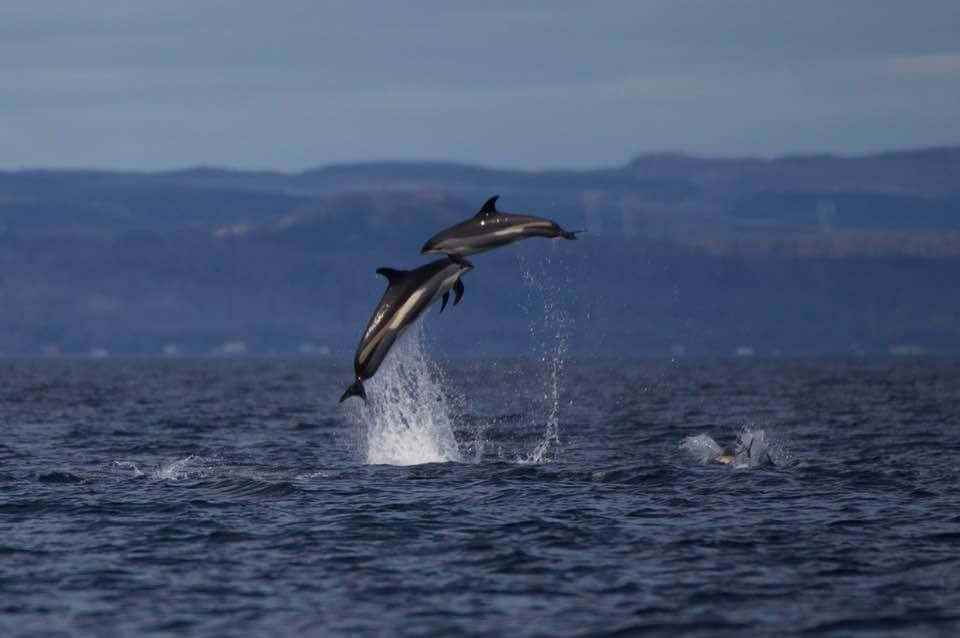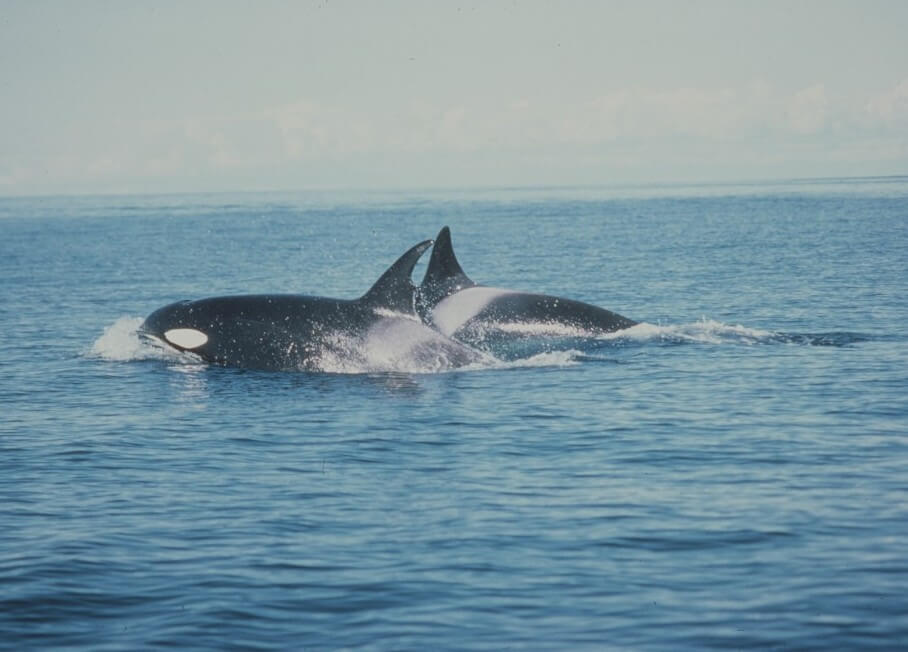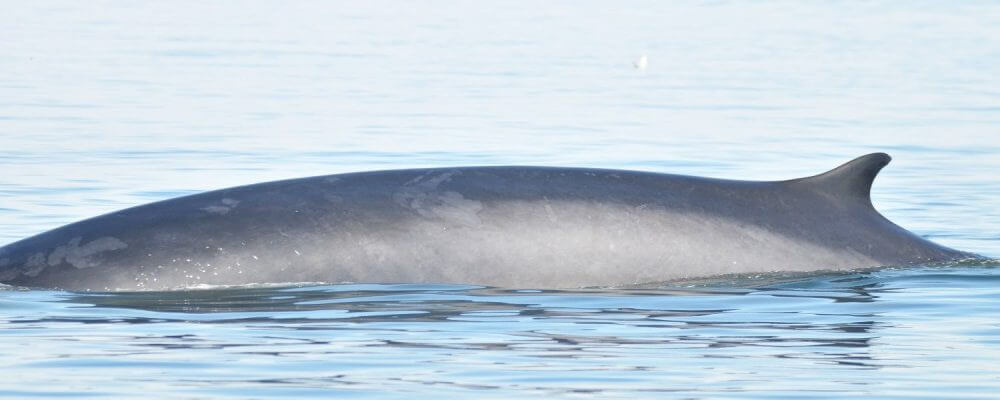“What? Dolphins? Here?” wonders one reader. For many people, when the talk turns to dolphins, the first thing that comes to mind is Flipper, a bottlenose dolphin. But in reality, there are currently 37 described species in the dolphin family (Delphinidae). Of these, three species include the St. Lawrence in their range: the Atlantic white-sided dolphin, the white-beaked dolphin and the killer whale. And this week, two of them were seen in the Gulf.
On September 10, white-sided dolphins wow a fisherman off the tip of Thériault, near Sept-Îles. The animals dart through the water like torpedoes, their dorsal fins cutting through the waves and sending sprays of water into the air. A few individuals jump a little higher and show the species’ characteristic white, grey and yellow flanks. “It was really impressive, they were popping up everywhere!” he relates.
On September 16, white-sided dolphins are swimming and jumping by the hundreds off La Tabatièrein the Basse-Côte-Nord region. The boater shares a magical moment: within the herd, calves can be seen swimming at their mothers’ sides. Some of them are particularly dynamic and leap high into the air. What makes them jump like this? Dolphins are known to be playful. One of the functions of play, even in humans, is to improve fitness. Jumping is perhaps a way to become a better swimmer or a better hunter, but also to boost one’s morale!
Despite the thrill of observing white-sided dolphins and the sighting of a minke whale a few days earlier, the boater has one regret: he didn’t get to see the killer whale reported by commercial fishermen nearby. The killer whale is the largest representative of the dolphin family. Althoughkiller whale populations are fairly well known on Canada’s Pacific coast, those that roam the North Atlantic are poorly documented. Sightingsare on the upswing off the coasts of Newfoundland, but they are still uncommon in the Gulf of St. Lawrence and even more rare in the Estuary. Lucky enough to see a killer whale? Quick, take pictures and videos and send them to us!
Faithful visitors
Year after year, Jacques Gélineau notes the presence of the same blue whales during the month of September off Port-Cartierand Sept-Îles. “In my view, they have a good memory,” he says in reference to the seven blue whales he photographed this week. He is not the only one to have noticed this phenomenon. One study published last year sheds light on the fact that Pacific blue whales rely on their memory when migrating in order to optimize their krill intake. They thus favour those places where the presence of krill is most stable. Although the methodology has not yet been repeated on North Atlantic blue whales, it is quite possible that the results would be similar if the study were to be replicated in our waters. During his most recent outings, Jacques also noted the presence of fin whales and minke whales. Harbour porpoises, on the other hand, are fewer and fewer, as they are probably beginning to migrate, slowly but surely.
A well-known fin whale enters the Saguenay-St. Lawrence Marine Parkon September 12. The male Orion is thus making his fifteenth consecutive annual visit to the Estuary! He joins nearly a dozen fin whales, including three calves. Renaud Pintiaux observes one calf regularly near Bp955, a.k.a. “Ti-Croche”. Does this mean Ti-Croche is a female, or even a mother? Perhaps a biopsy will tell us one day.
That same day, Renaud also observes five humpback whales in groups. Most of these individuals have been feeding here for several months now. As the summer progresses, the whales gain weight to help them get through the winter! The photographer also enjoys views of minke whales and birds, which are present “en masse”.
No social distancing for belugas!
On September 11, Laure Marandet distributes the publication “Portrait de baleines” to captains and naturalists working within the Marine Park. She takes advantage of her visit to Les Escoumins to take a look out to sea. She spots a herd of belugas. “There must have been a hundred of them,” she exclaims, “and there was a great deal of action. We saw sprays of water, tails, lots of movement.” In fall, belugas temporarily congregate in herds of hundreds of individuals of all ages. The role of these large gatherings in which the belugas seem to be practically on top of one other is not well understood. Nevertheless, they put on one heck of a show!
On September 16, a group of kayakers crossed paths with a herd of some fifty belugas not far from L’Anse-de-Roche. The kayakers feel tiny in their craft compared to the belugas. An adult male can measure over 4 metres long! And if it decides to interact with the watercraft, a beluga could misjudge its strength and accidentally capsize it. All the more reason to comply with the regulation and maintain a distance of 400 metres with them, even if this is not always easy in the Saguenay!
A very quiet Gaspé Bay
While 2019 was the year of magical observations in Gaspé Bay, local residents are joking that whales are sulking them in 2020. Spouts are on the upswing on the St. Lawrence side of the tip of the Gaspé, whereas the inner bay is playing host to seals, but no whales. Sometimes, viewing seasons can be very different from one week, month or year to the next, and it is difficult to pinpoint the cause(s) of these variations. Very often though, it’s got something to do with fish…
Where are the whales this week? Let's find out!
This map gives an idea of the presence of whales and does not at all represent the actual distribution of whales in the St. Lawrence. Use it for fun!










